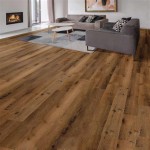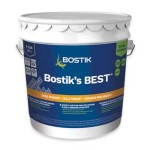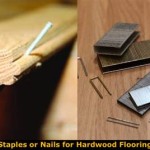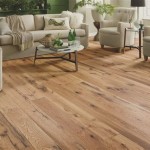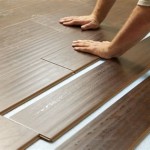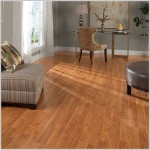Thin Brick Tile Flooring: A Comprehensive Guide
Thin brick tile flooring presents a unique and versatile option for both residential and commercial spaces. This material offers the aesthetic appeal of traditional brick but with reduced thickness and weight, making it suitable for various applications where traditional brick might be impractical. This article will explore the characteristics, advantages, installation, and maintenance of thin brick tile flooring, providing a comprehensive understanding of this increasingly popular flooring choice.
What is Thin Brick Tile?
Thin brick tile, also known as brick veneer or faux brick flooring, is essentially a thinner version of traditional brick. It is manufactured using similar materials, typically clay, shale, or a combination thereof, which are then fired at high temperatures. The primary difference lies in the thickness; whereas a traditional brick is typically 3.5 inches thick, thin brick tile ranges from ½ inch to 1 inch. This reduction in thickness significantly reduces the weight of the material, making it easier to handle, transport, and install.
The manufacturing process for thin brick tile often involves slicing larger brick units into thinner profiles after firing. Alternatively, some manufacturers produce thin brick tile directly in the desired thickness. This direct production method can result in a more uniform and consistent product. Regardless of the method, the resulting thin brick tile retains the authentic look and texture of traditional brick, offering a visually appealing alternative without the structural demands.
Thin brick tile is available in a wide range of colors, textures, and sizes. This variety allows for diverse design possibilities, from rustic and traditional aesthetics to more modern and contemporary styles. The color variations are often achieved through the use of different clay mixtures and firing techniques, resulting in natural and unique color palettes. The texture can range from smooth and uniform to heavily textured and distressed, mimicking the look of reclaimed or aged brick.
From a technical standpoint, thin brick tile offers several advantages over traditional brick. Its reduced weight allows for installation on surfaces that might not be able to support the load of full-thickness brick. It also requires less material, which can translate to cost savings in both material purchase and transportation. The thinner profile also means less impact on floor height, which can be crucial in renovation projects or when transitioning between different flooring materials.
Advantages of Thin Brick Tile Flooring
Thin brick tile flooring offers numerous benefits that make it an attractive option for various applications. These advantages encompass aesthetic appeal, ease of installation, durability, and cost-effectiveness.
Aesthetically, thin brick tile provides the timeless charm and character of traditional brick without the weight and complexity associated with its installation. The inherent variations in color and texture create a visually appealing and unique floor. This natural aesthetic works well in both traditional and modern settings, adding warmth and character to any space. The ability to choose from a wide range of colors and textures allows for customization to suit specific design preferences and architectural styles.
The relatively lightweight nature of thin brick tile simplifies the installation process compared to traditional brick flooring. It can be installed over existing concrete slabs, plywood subfloors, or even tile surfaces with proper preparation. This versatility allows for easier renovation projects and can reduce the overall installation time. The use of thin-set mortar and grout simplifies the process, making it accessible to both professional installers and experienced DIY enthusiasts. The thinner profile also means less demolition work when replacing existing flooring.
Despite its reduced thickness, thin brick tile is a durable and long-lasting flooring option. The firing process renders the material resistant to wear, staining, and fading. When properly sealed, it is also resistant to water damage, making it suitable for use in kitchens, bathrooms, and other areas prone to moisture. The inherent strength of the clay material ensures that the flooring can withstand heavy foot traffic and resist cracking or chipping. The durability of thin brick tile translates to a long service life and minimal maintenance requirements.
While the initial cost of thin brick tile may be comparable to other flooring options, its long-term cost-effectiveness is a significant advantage. The durability and low maintenance requirements reduce the need for frequent repairs or replacements, resulting in lower overall costs over the lifespan of the flooring. The lighter weight also translates to lower transportation costs and easier handling during installation. The versatility of thin brick tile, allowing it to be installed over existing surfaces, can also reduce the cost of demolition and subfloor preparation.
In conclusion, the advantages of thin brick tile flooring extend beyond its aesthetic appeal. Its ease of installation, durability, and cost-effectiveness make it a practical and attractive choice for a wide range of flooring applications.
Installation of Thin Brick Tile Flooring
The successful installation of thin brick tile flooring requires careful planning and execution. Proper surface preparation, material selection, and installation techniques are essential for achieving a durable and aesthetically pleasing result. This section outlines the key steps involved in the installation process.
The first step is thorough surface preparation. The subfloor must be clean, level, and structurally sound. Any existing flooring, such as carpet or vinyl, must be removed. Concrete slabs should be inspected for cracks or imperfections, which should be repaired before proceeding. Wooden subfloors should be checked for signs of rot or water damage and repaired or replaced as needed. Regardless of the subfloor material, it should be thoroughly cleaned to remove any dust, dirt, or debris. Applying a self-leveling compound may be necessary to create a perfectly level surface. This is particularly important for achieving a uniform and even thin brick tile floor.
Next, select the appropriate thin-set mortar for the project. Modified thin-set mortars are generally recommended for thin brick tile installation, as they provide better adhesion and flexibility. The mortar should be mixed according to the manufacturer’s instructions, paying attention to the water-to-mortar ratio. It is important to use a notched trowel to apply the mortar to the subfloor. The size of the notches will depend on the size and texture of the thin brick tile. The mortar should be applied in small sections, working in manageable areas at a time to prevent it from drying out before the tiles are set.
The thin brick tiles are then carefully placed onto the mortar bed. Use spacers to maintain consistent grout lines between the tiles. The size of the grout lines will depend on the desired aesthetic and the size of the tiles. Press each tile firmly into the mortar, ensuring that it is properly aligned and level with the surrounding tiles. Use a rubber mallet to gently tap the tiles into place, ensuring good contact with the mortar. Periodically check the levelness of the tiles using a level and make adjustments as needed. It is also important to maintain a consistent pattern and layout throughout the installation.
After the mortar has cured for the recommended time, typically 24 to 48 hours, the grout can be applied. Select a grout color that complements the color of the thin brick tiles. The grout should be mixed according to the manufacturer’s instructions. Use a grout float to apply the grout to the tile surface, working it into the grout lines. Remove excess grout from the tile surface using a damp sponge. Rinse the sponge frequently to prevent grout haze from forming on the tiles. Allow the grout to cure for the recommended time.
Finally, apply a sealant to the thin brick tile floor to protect it from staining and water damage. Choose a sealant that is specifically designed for use on brick or stone. Apply the sealant according to the manufacturer’s instructions. Periodic resealing may be necessary to maintain the protective properties of the sealant. With proper installation and sealing, thin brick tile flooring can provide years of durable and aesthetically pleasing performance.
Maintenance and Care of Thin Brick Tile Flooring
Maintaining the beauty and longevity of thin brick tile flooring requires regular cleaning and appropriate care. While thin brick tile is a durable material, proper maintenance practices will help prevent staining, wear, and damage. This section outlines the key aspects of cleaning and caring for thin brick tile floors.
Regular cleaning is essential for preventing the buildup of dirt, dust, and grime on thin brick tile flooring. Sweeping or vacuuming the floor regularly will remove loose debris and prevent it from being ground into the surface. Use a soft-bristled broom or a vacuum with a brush attachment to avoid scratching the tiles. For routine cleaning, use a mild detergent mixed with water. Avoid using harsh chemicals, abrasive cleaners, or acidic solutions, as these can damage the sealant and the tile surface. Mop the floor with the detergent solution, using a clean mop and rinsing it frequently. Dry the floor thoroughly after mopping to prevent water spots.
For more stubborn stains, specific cleaning solutions may be required. For oil-based stains, use a degreasing cleaner. For water-based stains, use a mild alkaline cleaner. Always test the cleaning solution in an inconspicuous area before applying it to the entire floor. Follow the manufacturer’s instructions for the application and removal of the cleaning solution. Rinse the floor thoroughly after cleaning to remove any residue. Avoid using abrasive scrubbing pads or brushes, as these can scratch the tile surface.
Sealing is an important aspect of maintaining thin brick tile flooring. A sealant protects the tiles from staining, water damage, and wear. The type of sealant used will depend on the type of thin brick tile and the desired finish. Penetrating sealants are absorbed into the tile and provide protection from within, while surface sealants form a protective layer on the surface of the tile. Reapply the sealant periodically, as recommended by the manufacturer, to maintain its protective properties. Clean the floor thoroughly before applying the sealant. Follow the manufacturer’s instructions for the application and drying time of the sealant.
Preventive measures can also help to protect thin brick tile flooring. Use mats or rugs at entryways to trap dirt and debris before they are tracked onto the floor. Place felt pads under the legs of furniture to prevent scratching. Avoid dragging heavy objects across the floor. Clean up spills immediately to prevent staining. By following these simple preventive measures, you can extend the life of your thin brick tile flooring and keep it looking its best.
By implementing a consistent cleaning and maintenance regimen, this ensures the longevity and aesthetic appeal of thin brick tile flooring, making it a worthwhile investment for any space.

How To Use Thin Brick For Flooring Installation North Georgia

Brick Flooring Tiles Thin Walls Floor Tile

Thin Brick Veneer By Portstone

Brick Flooring Tiles Thin Walls Floor Tile

Chicago Antique Thin Brick Veneer Farmhouse Flooring Sq Ft

How To Install Herringbone Brick Floor Tile Jenna Sue Design

Custom Antique Floor Tile Thin Brick Company

Authentic Brick Floor Tiles Experienced And Stone

Stylish Brick Tiles For Elegant Interiors Msi Surfaces

Marion Ceramics Thin Pavers Bricktile S
Related Posts

